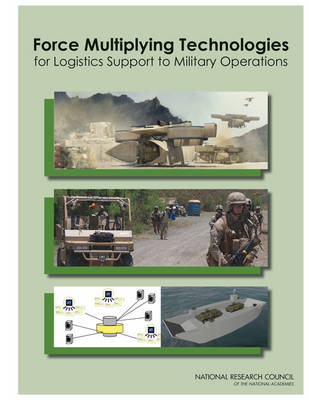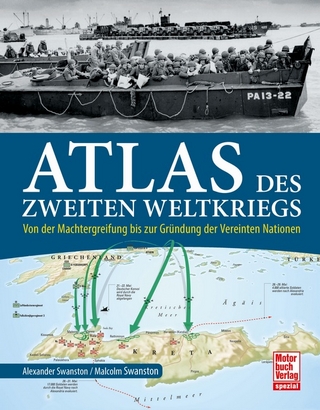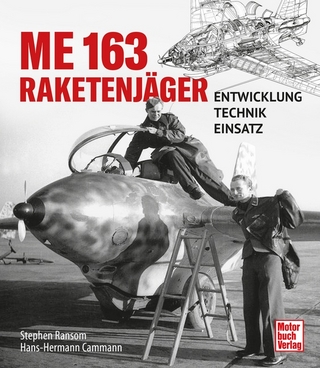
Force Multiplying Technologies for Logistics Support to Military Operations
Seiten
2015
National Academies Press (Verlag)
978-0-309-30733-8 (ISBN)
National Academies Press (Verlag)
978-0-309-30733-8 (ISBN)
The mission of the United States Army is to fight and win our nation's wars by providing prompt, sustained land dominance across the full range of military operations and spectrum of conflict in support of combatant commanders. Accomplishing this mission rests on the ability of the Army to equip and move its forces to the battle and sustain them while they are engaged. Logistics provides the backbone for Army combat operations. Without fuel, ammunition, rations, and other supplies, the Army would grind to a halt. The U.S. military must be prepared to fight anywhere on the globe and, in an era of coalition warfare, to logistically support its allies. While aircraft can move large amounts of supplies, the vast majority must be carried on ocean going vessels and unloaded at ports that may be at a great distance from the battlefield. As the wars in Afghanistan and Iraq have shown, the costs of convoying vast quantities of supplies is tallied not only in economic terms but also in terms of lives lost in the movement of the materiel.
As the ability of potential enemies to interdict movement to the battlefield and interdict movements in the battlespace increases, the challenge of logistics grows even larger. No matter how the nature of battle develops, logistics will remain a key factor. Force Multiplying Technologies for Logistics Support to Military Operations explores Army logistics in a global, complex environment that includes the increasing use of antiaccess and area-denial tactics and technologies by potential adversaries. This report describes new technologies and systems that would reduce the demand for logistics and meet the demand at the point of need, make maintenance more efficient, improve inter- and intratheater mobility, and improve near-real-time, in-transit visibility. Force Multiplying Technologies also explores options for the Army to operate with the other services and improve its support of Special Operations Forces. This report provides a logistics-centric research and development investment strategy and illustrative examples of how improved logistics could look in the future.
As the ability of potential enemies to interdict movement to the battlefield and interdict movements in the battlespace increases, the challenge of logistics grows even larger. No matter how the nature of battle develops, logistics will remain a key factor. Force Multiplying Technologies for Logistics Support to Military Operations explores Army logistics in a global, complex environment that includes the increasing use of antiaccess and area-denial tactics and technologies by potential adversaries. This report describes new technologies and systems that would reduce the demand for logistics and meet the demand at the point of need, make maintenance more efficient, improve inter- and intratheater mobility, and improve near-real-time, in-transit visibility. Force Multiplying Technologies also explores options for the Army to operate with the other services and improve its support of Special Operations Forces. This report provides a logistics-centric research and development investment strategy and illustrative examples of how improved logistics could look in the future.
1 Front Matter; 2 Summary; 3 1 Introduction; 4 2 The Current Logistics Picture; 5 3 Reducing the Major Logistics Demands; 6 4 Logistics Mobility; 7 5 Maintenance, Retrograde, and Waste; 8 6 Logistics Enterprise Information Systems and Decision Support; 9 7 Use of Contractors and the Army Reserve; 10 8 Optimizing the Logistics Effort; 11 9 Logistics-Centric Science and Technology and Research and Development Investment Strategy; 12 10 Future Operations: How It Might Be; 13 11 Findings and Recommendations; 14 A--Committee Activities; 15 B--Biographical Sketches of Committee Members; 16 C--Statement of Task; 17 D--Sea State; 18 E--Containers; 19 F--Management Innovation as a Strategic Technology; 20 G--Sustainment Readiness Levels
| Erscheint lt. Verlag | 15.1.2015 |
|---|---|
| Verlagsort | Washington |
| Sprache | englisch |
| Maße | 216 x 280 mm |
| Themenwelt | Natur / Technik ► Fahrzeuge / Flugzeuge / Schiffe ► Militärfahrzeuge / -flugzeuge / -schiffe |
| Sozialwissenschaften ► Politik / Verwaltung | |
| ISBN-10 | 0-309-30733-3 / 0309307333 |
| ISBN-13 | 978-0-309-30733-8 / 9780309307338 |
| Zustand | Neuware |
| Haben Sie eine Frage zum Produkt? |
Mehr entdecken
aus dem Bereich
aus dem Bereich
von der Machtergreifung bis zur Gründung der Vereinten Nationen
Buch | Softcover (2023)
Motorbuch Verlag
24,90 €


